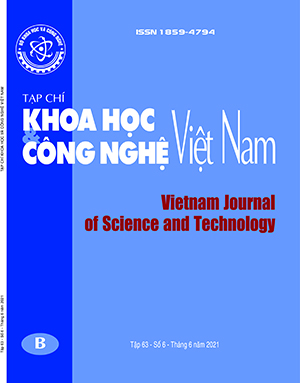Research on the sensitivity of parameters and calibrates DNDC model for calculating emissions from paddy rice cultivation activities.
Abstract
This study estimates the sensitivity of parameters to serve the adjustment and construction of standard parameters in the Decomposition - Denitrification (DNDC) model when calculating greenhouse gas emissions from rice cultivation on alluvial, alkali, acid-sulfate, and bleached soils of Red river delta, Vietnam. The research results show that the following parameters: bulk density, clay fraction, microbial activity index, soil organic carbon (SOC), temperature, conductivity, fertilization of urea, and porosity have a high sensitivity for the calculation of CH4 emissions; the following parameters: pH, drainage efficiency, depth of water retention layer, field capacity, initial nitrate and ammonium concentrations at surface soil, and rainfall have low sensitivity and less influence for the calculation of CH4 emissions; the wilt moisture and salinity index have no effect on CH4 emissions. In case of N2O emissions, the following parameters: amount of manure, clay fraction, microbial activity index, pH, initial nitrate concentration at surface soil, bulk density, SOC, field capacity, porosity and depth of water retention layer have a high sensitivity and more influence to N2O emissions; the following parameters: drainage efficiency, conductivity, initial ammonium concentration at surface soil, temperature, fertilisation of urea and rainfall have low sensitivity and less influence to N2O emissions; the wilting point and soil salinity index have no effect on N2O emissions. The results of model calibration show a good correlation between observed and simulated values in both spring and summer crops in 2018. The R2 of the spring and summer crops reach 0.86 and 0.79, the Nash-Sutclitffe efficiency index reaches 0.82 and 0.77 for CH4 emission; meanwhile, for N2O emission, these values are 0.62, 0.69, and 0.76, respectively. The study also found a model calibration parameter used to calculate greenhouse gas emissions from rice cultivation on alluvial, alkali, acid-sulfate, and bleached soils.

